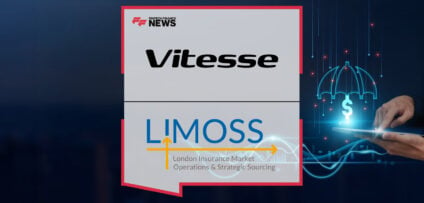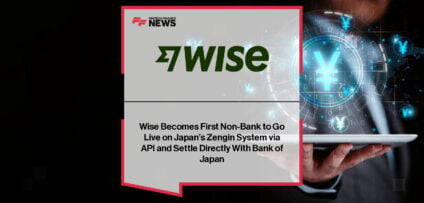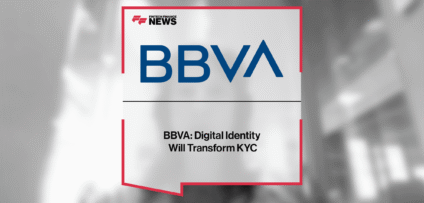Breaking News

EXCLUSIVE: “Mix and MACH” – Rajesh Saxena, Intellect Design Arena in ‘The Fintech Magazine’
The UK’s smaller banks and building societies could help ‘unleash’ economic growth in line with the government’s Edinburgh Reforms. But to take full advantage of that they need access to affordable tech… Rajesh Saxena from Intellect Design Arena believes he has the answer
Despite all predictions to the contrary, the UK’s banking giants still reign supreme, rising above fears that rival fintechs will eat away at their customer base, steal their talent and drive them to the outer rim of the financial services universe where they will exist as mere utilities. It hasn’t happened.
According to the union Unite, profits at the UK’s big four banks have spiked by 42 per cent since before the pandemic. They posted a record £33billion between them in 2022. And, together, they still oversee more than three-quarters of all current accounts. UK retail and commercial banking continues to be relatively concentrated, with a notable absence of mid-tier competitors of scale, which is why there has been so much debate in recent years over how far the government, now that the UK is outside of the EU, should subject them to the same costly and operationally time consuming risk measures as bigger institutions.
But could a combination of more proportionate regulation and a new wave of more affordable and flexible technology begin to level the playing field for small players?
The UK Government’s post-Brexit financial services shake-up, known as the Edinburgh Reforms, has an underlying rationale to ‘unleash’ financial services to ‘drive investment and growth’ by creating an open, sustainable, and technologically advanced sector.
Contained among a myriad of proposals is changing the Building Societies Act to give UK building societies greater flexibility to raise wholesale funds, enabling them to grow and compete with retail banks. And there are also plans to modify – perhaps eventually replace – the ringfencing regime, designed to protect customers of a bank’s retail division from shocks elsewhere in the business if a bank is holding more than £25billion (currently) of deposits.
The government is conscious that the UK’s mid and lower tier, challenger and specialist banks play an important role: a diversified banking system is a stronger and more resilient one, after all. And these banks have real-world impact on the economy: they are a major and growing source of lending to small businesses, reaching a record high of £35.5billion in 2022, according to the British Business Bank’s latest Small Business Finance Market report.
In many cases, they also provide better value for customers. Major banks have only recently been warned by regulators of possible intervention if they fail to pass on the Bank of England’s decade-high interest rate to customers’ saving accounts, for instance. Many smaller institutions immediately raised returns. So, if the regulatory environment is moving in these smaller players’ favour, there’s also likely to be a growing need to adopt technology to scale their services.
The problem for mid- and lower tier financial services providers is that often they don’t have the advantage of a big bank’s huge internal IT resources, nor the budget for full-scale transformation.
But they don’t have to, says Rajesh Saxena, CEO for retail and central banking business unit (iGCB) at Intellect Design Arena. A publicly listed company in India, it’s put its mind to solving the dilemma for mid- and lower tier institutions in the UK by introducing a regulatory compliant platform this year, called eMACH.ai.
LEVELLING THE PLAYING FIELD
If you’re not familiar with MACH, it’s an acronym that stands for Microservices (individual segments of business functionality that are independently developed and managed); API-first (all functionality is exposed through an API, making it possible to tie together applications or services); Cloud-native (often a software-as-a-service that gives elastic scaling and the ability to update functionalities easily); and Headless (the front-end user experience isn’t tied to back-end logic, giving more design freedom and interconnectivity).
Fully aware of the difficulties smaller organisations have in matching the technology spending power of their Tier 1 competitors, Intellect Design Arena chose to pre-integrate with key fintechs and partners in the UK market in developing the eMACH.ai platform. That acts as a big leveller, says Saxena.
“Typically, when you want to launch a new product, a new business or a new service, the maximum of time, effort and investment is required in integrating with parties, such as a credit bureau, a know-yourcustomer (KYC) registry, or a government agency. So we have pre-identified some of these fintechs and partners, integrated them, and put this on the Cloud.
“Where technology has become the backbone of banking, the inability to spend as much as the big banks is one of the key challenges these providers are facing”
“Let’s take the example of a private bank that wants to do SME financing, which is a very hot topic at the moment. You can leverage our platform to compose and extend the product. And that is available to you on a pay-as-you-grow basis, pre-integrated with most of the key bureaus. So, your cost is really reduced, and you can quickly launch new products, segment-specific propositions, on the fly.
“Where technology has become the backbone of banking, the inability to spend as much as the big banks is one of the key challenges these providers are facing,” continues Saxena. ”But the good news is that they can use platforms like ours on a non-capex model. They can pay as they grow, with a very limited up-front investment. And that is kind of democratising. This is how we believe Tier 3 and Tier 4 banks can really compete with the high street or Tier 1 banks. It’s a very interesting stage in the market.”
There are, he says, six compelling reasons to adopt the eMACH.ai platform.
“The first is that it’s a comprehensive banking platform,” he says. “It offers all your core banking: savings, deposits, lending – which could be loan origination, loan management and collection, credit cards, anti-money laundering (AML), treasury, etc. And, depending on your need and the products you want to offer, you can pick and choose.
“The second USP is that it’s a very modern architecture. It’s microservices-based, event-driven, API-enabled, Cloud-native and headless, with some underlying embedded AI.
“The third, which is very important for banks, is its composability and extensibility. The bank staff, whether it’s the product team or the technology team, can compose new user journeys themselves, by using microservices, and partner microservices through a tool called iTurmeric, and launch them to the market. They don’t have to go to the vendor and say, ‘I want to launch this new product’, and wait six months for them to configure and test it. In terms of extensibility, let’s take an example where regulation asks you to capture a couple of extra fields that were not in your earlier program. We have a tool where banks can add them themselves.
“The fourth real value is in a UK-ready marketplace, pre-integrated with key fintechs and partners.
“And the fifth USP is the pay-as-you-grow model. So you could be paying per loan account that you open, rather than £1million prior to even starting the work.
“The final feature, which is an important trend that we are seeing in the UK and Europe, is that customers want to become net zero. So we have built in sustainability through an ESG rules engine. The bank can show the carbon footprint that the customer is creating by each and every transaction, and how they can green those transactions.”
In other words, eMACH.ai gives smaller institutions affordable flexibility to carve out a niche for themselves and compete with dominant players by giving an incrementally better service to customers. Full technology transformation doesn’t have to happen overnight; rather, bite-sized digital acceleration in some areas can happily co-exist with legacy tech, says Saxena. That gives them the option to focus in on specific features or business lines without disrupting the beating heart of the bank.
“Most of them are first looking at digital and omnichannel experience, especially how they can do zero touch customer onboarding. Many banks see SMEs as a big market opportunity, also buy now, pay later.”
From his own analysis of the UK market, he believes opportunities abound for midand lower tier banks and building societies, particularly if they embrace the evolving open data frameworks. And eMACH.ai is, says Saxena, oven-ready for open finance.
“I was intrigued by the customer affinity that building societies and mortgage banks in particular have, and the certain sets of customers they have,” he says. “Now there is an opportunity for these banks to leverage open finance to really embed themselves in their customers’ lifestyle journeys.
“The platform we have launched will enable these specialised and lower tier banks, to increase their market opportunity; drive a comprehensive financial canvas for their customers’ stated and unstated needs.
This article was published in The Fintech Magazine Issue 28, Page 74-75
People In This Post
Companies In This Post
- How USAA Builds Digital Experiences Around Its Members Read more
- Spayce: Organic Growth, Own Tech, New Wallet Read more
- EXCLUSIVE: “Check, Check… and Check!” – Pilar Fragalà, CBI in ‘The Fintech Magazine’ Read more
- BBVA: Digital Identity Will Transform KYC Read more
- Pocket Network Is Pioneering ‘DePIN for Data’ Read more
















